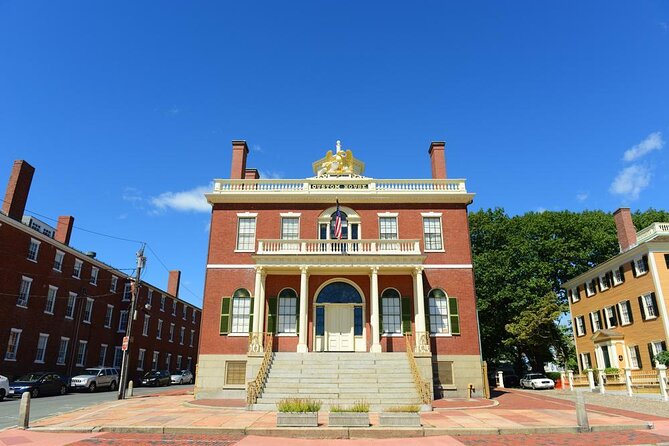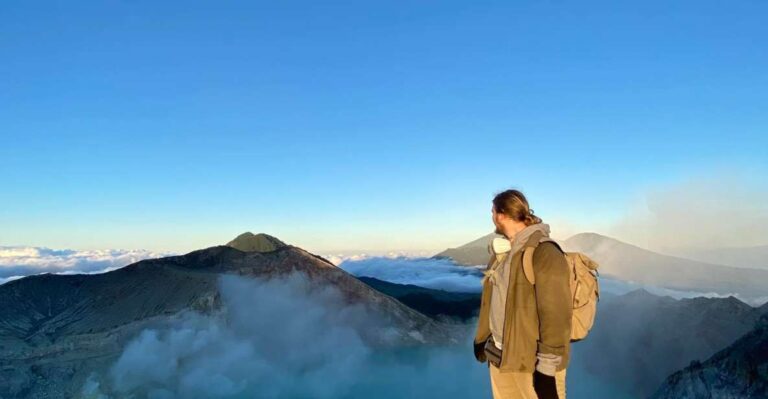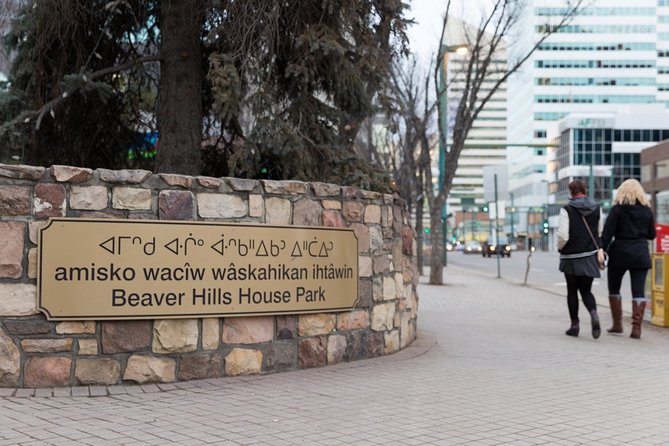Pompeii: Living With the Volcano
Nestled beneath the looming shadow of Mount Vesuvius, Pompeii quietly harbors stories of an ancient tragedy that forever altered its fate.
Unbeknownst to many, this once-thriving Roman city faced more than just the fury of a volcanic eruption in 79 AD; its inhabitants grappled with an everyday existence shadowed by the omnipresent threat of Vesuvius.
But what secrets lie within the ruins of Pompeii, waiting to be unearthed, revealing a civilization that learned to coexist with a sleeping giant?
Key Points
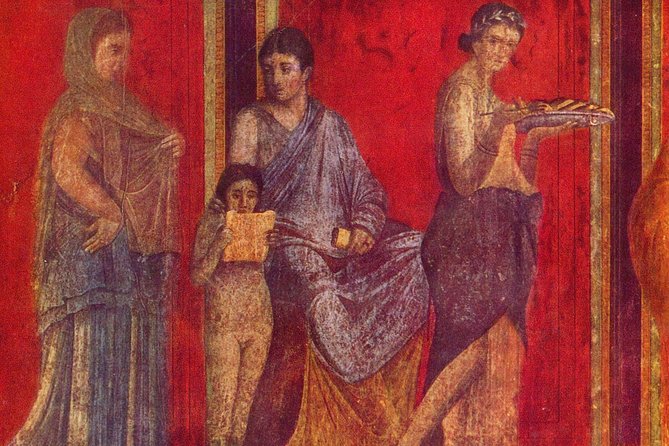
- Pompeii’s preservation offers insights into Roman life and the impact of natural disasters.
- Ongoing excavations reveal cultural significance and enrich historical knowledge.
- Pompeiians valued community, reflected in daily life snapshots frozen by the eruption.
- Conservation efforts balance preservation with accessibility, facing challenges like deterioration and tourism.
Here's some more nearby activities we've reviewed
History of Pompeii’s Volcanic Eruption
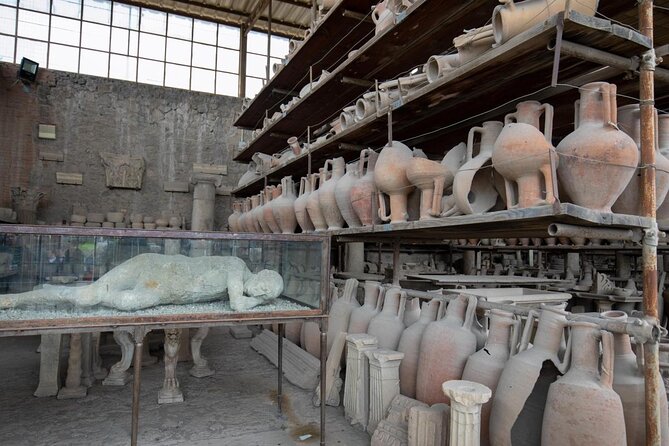
When Mount Vesuvius violently erupted in 79 AD, Pompeii met its catastrophic fate, forever preserved under layers of ash and pumice. The impact of the eruption was devastating, as molten rock and volcanic gases spewed from the volcano, burying the city and its inhabitants.
The aftermath of the eruption left Pompeii frozen in time, offering modern-day archaeologists a unique glimpse into ancient Roman life. The city’s sudden destruction resulted in the preservation of buildings, artifacts, and even the remains of its residents, providing valuable insights into daily routines, social structures, and cultural practices of the time.
Pompeii’s tragic end serves as a poignant reminder of the raw power of nature and the fragility of human existence in the face of natural disasters.
Pompeii’s Archaeological Discoveries
Unveiling Pompeii’s hidden treasures through ongoing archaeological excavations sheds light on the daily lives of its ancient inhabitants, offering a captivating glimpse into a world frozen in time by the catastrophic eruption of Mount Vesuvius.
The archaeological excavations at Pompeii have unearthed a wealth of artifacts, structures, and frescoes that provide invaluable insights into the city’s cultural significance. From the remains of luxurious villas to the detailed mosaics decorating public buildings, each discovery contributes to a deeper understanding of Pompeii’s past.
These findings not only reveal the advanced engineering and artistic skills of the ancient Romans but also offer a window into the social, economic, and religious aspects of daily life in this once-thriving city. The ongoing excavations continue to enrich our knowledge of Pompeii’s rich history.
Daily Life in Ancient Pompeii
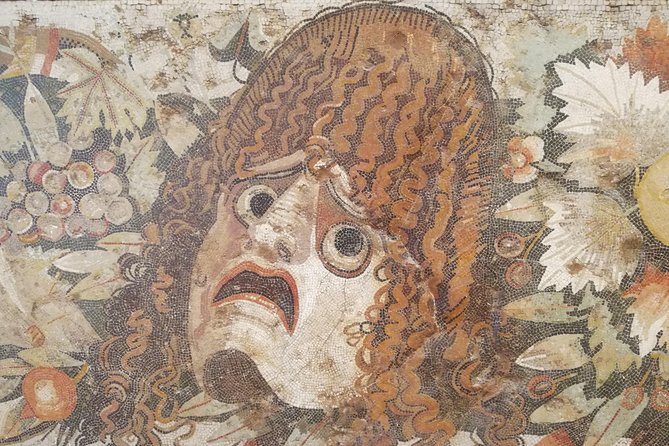
The archaeological excavations at Pompeii not only reveal the advanced engineering and artistic skills of the ancient Romans but also offer a vivid glimpse into the daily life of its ancient inhabitants, painting a fascinating portrait of a society frozen in time by the catastrophic eruption of Mount Vesuvius.
-
Social Customs: Pompeiians valued family and community, with houses often centered around a courtyard where they gathered for meals and socializing.
-
Economic Activities: Trade was bustling in Pompeii, with markets filled with goods from all over the Roman Empire, showcasing the city’s economic prosperity.
-
Public Life: Pompeii had a vibrant public life, with theaters, baths, and forums serving as hubs for entertainment, socializing, and political discussions among its citizens.
Impact of Vesuvius on Pompeii
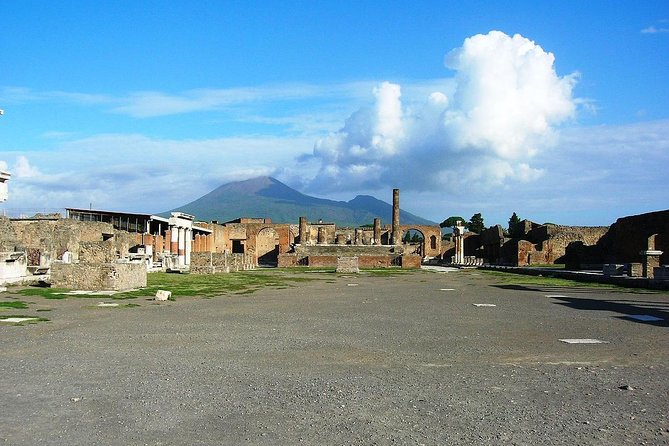
Having experienced the devastating eruption of Mount Vesuvius in 79 AD, Pompeii underwent a transformation that forever altered its landscape and history. The impact of Vesuvius was catastrophic, burying the city under layers of ash and pumice, preserving it for centuries until its excavation began. The excavation of Pompeii has provided invaluable insights into daily life in ancient Rome and the effects of natural disasters on human settlements. The ruins of Pompeii stand as a haunting reminder of the power of nature and the fragility of life. Below is a table summarizing the impact of Vesuvius on Pompeii:
| Vesuvius Impact | Pompeii Excavation |
|---|---|
| Burying the city in ash | Uncovering ancient artifacts |
| Preserving the city | Revealing daily life of its inhabitants |
| Altering the landscape | Providing insights into Roman civilization |
| Causing destruction | Shedding light on natural disaster effects |
| Historic catastrophe | Continuing archaeological discoveries |
Preservation Efforts in Pompeii
Efforts to preserve the archaeological site of Pompeii showcase a dedication to safeguarding and maintaining the ancient ruins for future generations to explore and learn from. Conservation efforts and restoration projects play key roles in ensuring the longevity of Pompeii’s historical significance:
-
Ongoing Conservation: Skilled professionals meticulously work to protect and stabilize structures, frescoes, and artifacts against natural decay and potential damage.
-
Advanced Technological Methods: Utilization of cutting-edge technologies like 3D scanning and digital mapping aids in documenting, analyzing, and preserving the site with precision.
-
Collaborative Initiatives: International partnerships and funding support large-scale restoration projects, fostering a global commitment to the preservation of Pompeii’s cultural heritage.
Exploring Pompeii’s Ruins Today
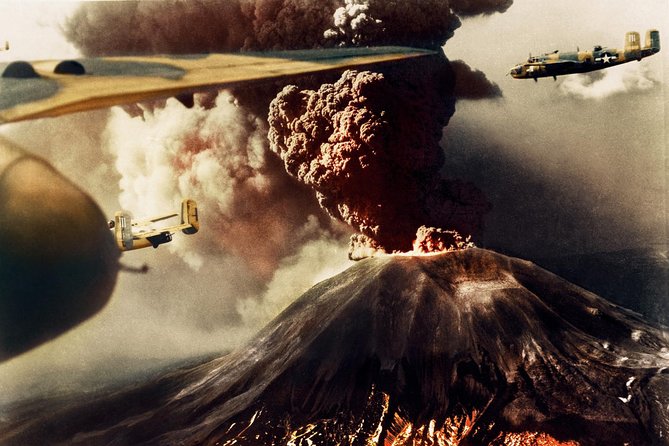
Protection and preservation efforts have paved the way for an immersive exploration of Pompeii’s mesmerizing ruins today. Modern excavations continue to unveil new insights into the daily lives of Pompeii’s ancient residents.
Visitors can now wander through streets lined with well-preserved houses, temples, and public buildings, offering a glimpse into the past. Current tourism allows for a close-up view of the tragic yet captivating history frozen in time by the eruption of Mount Vesuvius.
Tourists can witness plaster casts of the volcano’s victims, frozen in their final moments. Pompeii’s ruins stand as a testament to both the destructive power of nature and the resilience of human civilization, attracting travelers from around the world to experience this archaeological wonder firsthand.
Pompeii’s Influence on Modern Culture
In contemporary society, Pompeii continues to exert a profound influence on various aspects of modern culture.
-
Modern Adaptations: The story of Pompeii’s tragic fate has inspired numerous books, movies, and TV shows that reimagine the events leading up to the eruption of Mount Vesuvius in 79 AD. These adaptations often explore the human drama and historical significance of the ancient city.
-
Cultural References: Pompeii’s ruins serve as a symbol of resilience and the fragility of civilization, influencing art, literature, and architecture. Artists and writers draw inspiration from the preserved artifacts and poignant tales of the city’s inhabitants, infusing their work with themes of loss, preservation, and the passage of time.
-
Educational Impact: Pompeii’s excavation and ongoing research contribute to our understanding of ancient Roman life, influencing educational curricula and fostering a deeper appreciation for history and archaeology in modern society.
Future of Pompeii’s Volcanic Risk
Pompeii’s enduring connection to the volcanic landscape of Mount Vesuvius prompts a critical examination of the evolving risks posed by potential future eruptions. To mitigate these risks, Pompeii has implemented comprehensive evacuation plans and enhanced geological monitoring systems.
| Risk Mitigation Strategies | Description |
|---|---|
| Evacuation Plans | Well-defined protocols for swiftly evacuating residents and visitors in the event of volcanic activity. |
| Geological Monitoring | Continuous monitoring of Mount Vesuvius’ activity to provide early warnings and inform decision-making processes. |
These measures aim to safeguard lives and preserve the rich heritage of Pompeii in the face of volcanic threats. By combining proactive planning with advanced monitoring techniques, Pompeii strives to enhance its resilience and readiness for any future volcanic events.
Here's a few more nearby tours and experiences we have reviewed.
Common questions
What Are Some Lesser-Known Facts About the Daily Life of the People Living in Ancient Pompeii?
In ancient Pompeii, family dynamics played a crucial role in social hierarchy. Daily rituals included honoring household gods. Leisure activities varied from public baths to theater performances. These lesser-known facts shed light on the vibrant daily life of Pompeii’s inhabitants.
Are There Any Unique Artifacts or Discoveries in Pompeii That Are Not Commonly Talked About?
In the heart of Pompeii lie unique artifacts waiting to be discovered, lesser known excavations holding hidden mysteries. These treasures, untouched by time, offer a glimpse into the untold stories of ancient lives, waiting to be unveiled.
How Has Pompeii’s Cuisine and Food Culture Influenced Modern Italian Cuisine?
Pompeii’s culinary legacy has shaped modern Italian cuisine through a fascinating culinary evolution. The fusion of Pompeiian gastronomic treasures with traditional Italian dishes has created a unique and flavorful culinary landscape cherished by many.
What Are Some Hidden Gems or Less-Visited Areas Within Pompeii That Tourists Should Explore?
Visitors seeking hidden treasures in Pompeii should explore lesser-known ruins like the House of the Faun or the Amphitheater. These off-the-beaten-path areas offer a glimpse into daily life and lesser-visited historical sites.
Can Visitors Participate in Any Hands-On Preservation Activities or Restoration Projects in Pompeii?
Visitors can engage in hands-on preservation activities and restoration projects at Pompeii. Interactive experiences like workshops offer a unique opportunity to contribute to the conservation of this ancient site, enhancing the understanding and appreciation of its history.
Here's more of our most recent tour reviews happening neaby
- Traditional Neapolitan Dinner in Pompei – Villa Franca – Family Restourant
- Skip-The-Lines Private Full-Day Ancient Pompeii and Herculaneum Ruins Tour
- Pompeii and Herculaneum With Archaeologist, Private Visit !!!
- Full Day Private Tour-Temples of Paestum and Ruins of Pompeii
- Pompeii: Guided Tour of the Ruins and Cooking Class Fresh Pasta
- Pompeii Private Walking Tour With Expert and Authorized Guide
- Transfer From Pompeii to Naples or Viceversa
- Trip Excursion to Mt. Vesuvius – Pompeii Handmade Pasta Class With Lunch
- Skip-The-Line Ancient Pompeii Highlights Exclusive Tour With Local Private Guide
- Private Tour of Pompeii With Official Tour Guide and Skip the Line Tickets
- Guided Tour of Ravello
Last Words
In the shadows of the mighty Vesuvius, Pompeii stands as a testament to the power of nature and the resilience of humanity. Like a phoenix rising from the ashes, this ancient city continues to captivate visitors with its haunting beauty and rich history.
As we walk through its cobbled streets and gaze upon its preserved ruins, we’re reminded of the fragility of life and the enduring spirit of those who once called Pompeii home.

